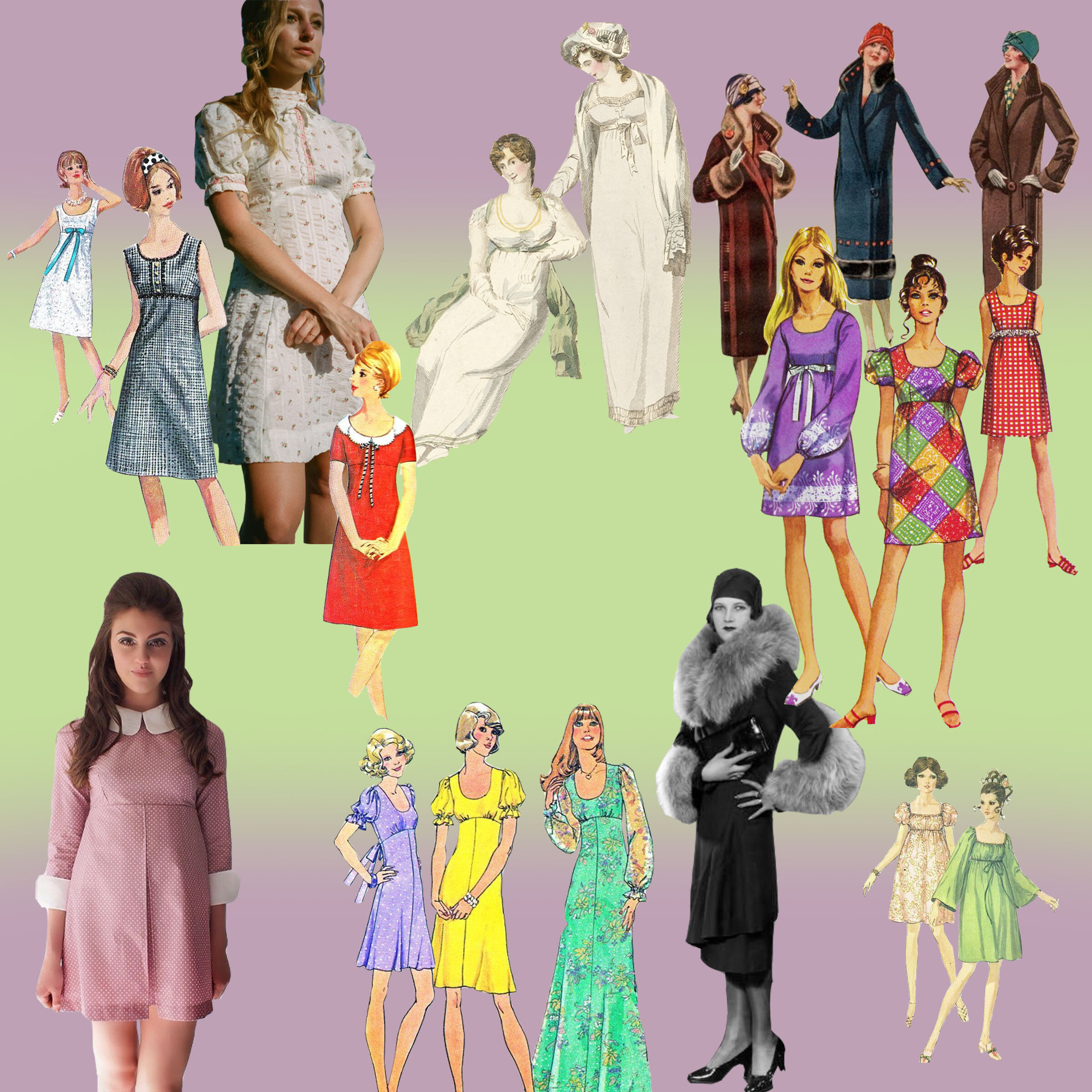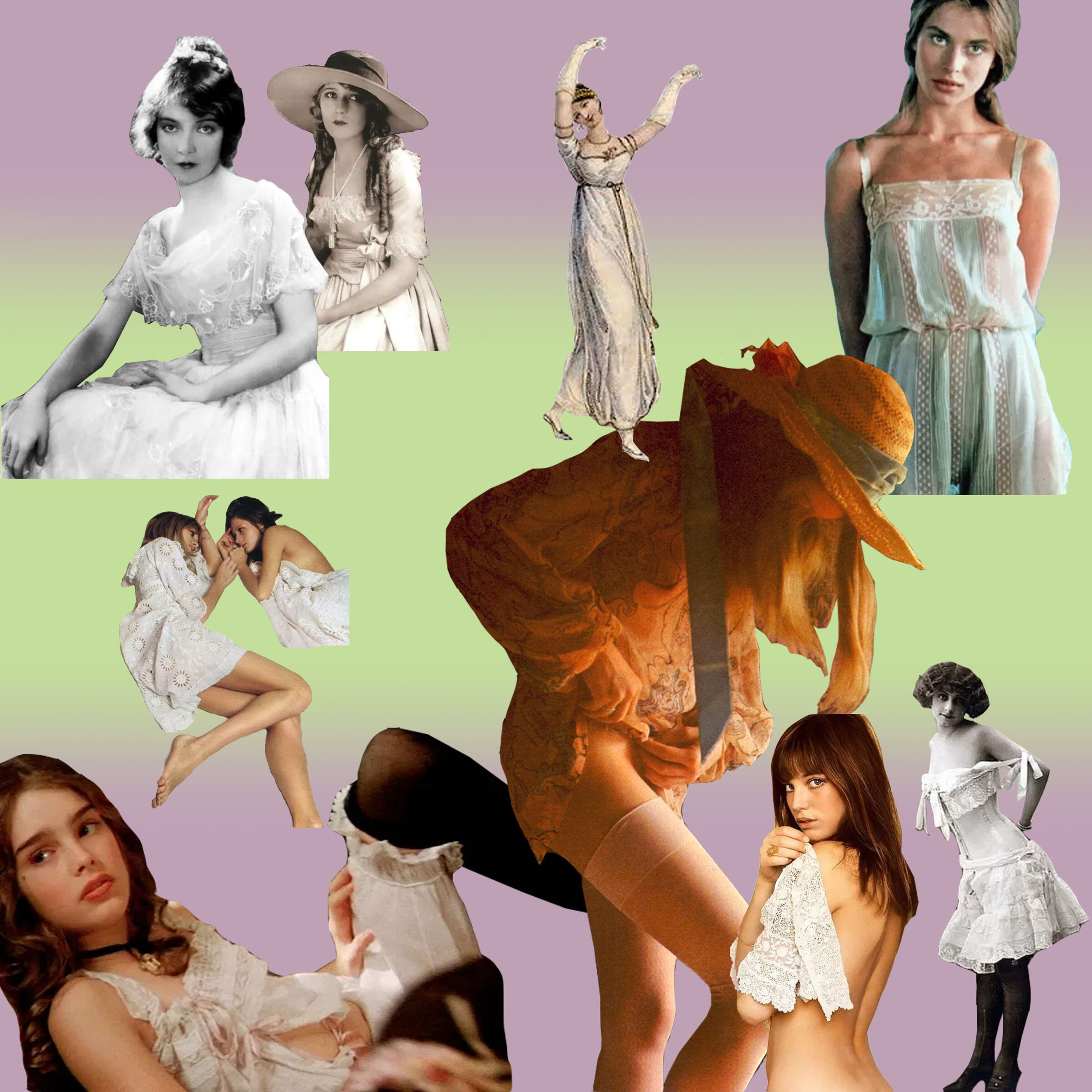‘About Time: Fashion and Duration’- The Met Gala Theme that Never Was
I always find myself wondering what the world would look like if COVID had not escalated like it did, or if the US had managed to handle it in a matter of months like other countries. What would the world be like? Would I be different? What now-unreleased music am I missing? What canceled movies or series or works of art will I never see? But on the flip side, what would I have missed if the pandemic had not happened?
In a world where COVID-19 didn’t exist, the first Monday in May I would be sitting in my AP Literature class holding my phone not-so-discreetly under my desk. I’d be refreshing Twitter and Instagram, watching the pictures of Bella Hadid wearing Karl Lagerfeld or Rihanna’s grand entrance in her Moschino ensemble roll in. I would then rush to my friends at lunch to compare dress and suit preferences and watch live streams of red carpet interviews, imagining what I would wear if I were to ever attend. And it doesn’t help that the 2020 theme of the Met Gala is my favorite in the event’s history: About Time: Fashion and Duration.
On May 4th, 2020 the entire world would have tuned in to watch the red carpet of New York City’s Met Gala. The Met Gala is the self-proclaimed fashion event of the year and has been growing bigger and better annually since 1948. Every year the Metropolitan Museum of Art holds a benefit hosted by designers, artists, and celebrities to fundraise for the Costume Institute at the Met. The Gala introduces a theme that is exhibited at the museum for the next year and serves as a dress code for designers to follow when dressing their guests. Past themes have covered everything ranging from tributes to designers and haute couture houses like Dior (1996), Versace (1997), and Yves Saint Laurent (1983) to niche themes highlighting cultural events, art, and subcultures like “Punk: Chaos to Couture” (2013) or “Camp: Notes on Fashion” (2019).
As someone who is a little too obsessed with history’s impact on fashion and its cultural significance, reading that the Met Gala was canceled broke my heart... well, my Tiffany’s Heart Tag choker, that is.
And yet, not all hope is lost on the 2020 theme! Despite the event being canceled and no designers finishing their work, the Met Costume Exhibit curators still put together an exhibit that is open for the limited time of October 28th, 2020 through February 7th, 2021. We know that this is short notice if this exhibition wasn’t already on your radar, so if you can’t make it to see the exhibit in time you can take a virtual tour here.
About Time: Fashion and Duration looks at fashion from the last 150 years, in honor of the Met’s 150th anniversary, looking at trends in shape, texture, structure, and functionality from 1870 to today. The exhibit is inspired by French philosopher Henri Bergson’s concept of “la durée” or “duration.” This idea reflects the cyclicality of time and how the past, present, and future conflate, fashion being the perfect example of this. The exhibition follows how the design, manufacturing, and wear of clothing shift in response to the historical movement of it’s time. Split into two sections or “timelines” museum-goers can start in either of the two adjacent galleries and follow “60 minutes” of fashion. Each minute is broken up in pairs of two garments, each from a different era in the last century and a half.
Knowing I won’t be able to make it to the exhibit in time, I decided to do what I do best: consult my fashion blogs and podcasts and do some research! Here are three “la durée” fashion comparisons that I would have loved to have seen in the collection (unfortunately not all of these are in the 150-year range because I couldn’t help myself)!
The Empire of Empire Waist Dresses from the 1810s and 1960s
Art by Jonny Arendt-Rosenberg
Empire waists were rightfully all the rage in both eras as their comfortable silhouette is flattering on any body type while making one look tall with long, straight lines. The empire waist’s first appearance was inspired by obsessions with ancient Greek and Roman culture after Napoleon Bonaparte established French rule over much of Europe (this is where the term “empire” comes from). Despite the shape staying the same the structure of empire waist differs from the 19th and 20th century. Following the regency period of the early 1800s, women were beginning to move away from flatter support garments called stays (essentially a precursor to the corset and the modern bra) to shorter stays which were not as heavily boned. Regency fashion was defined by naturalism and, while not undecorated, was very different from the gaudy fashions of the 18th century which fell out of fashion after the French revolution and the subsequent Reign of Terror. This theme of freedom stayed continuous with the trend’s resurgence in the ‘60s as at this time many women were opting for flowy, loose fitting dresses rather than the layers and padding of the traditional 1950s dresses they once wore. The empire waist mini and peasant dresses were comfortable and relaxing, greatly juxtaposing the everyday wear for women the decade before. In my opinion, the 2020s is a peak time for this elongating silhouette to make a comeback. With most people working from home, flowy empire dresses are the perfect stylish loungewear.
Flapper Chic from the 1920s Making a Comeback 100 Years Later
Jonny Arendt-Rosenberg
“Boy-ish” shapes, oversized coats, long straight dresses, drop waists, and sparkly accessories are what we know of the dancers and fashion icons of the 1920s. And we’re in luck because these glamorous trends are slowly beginning to come back in a chic, modern way. Slip dresses which were both popular in the 1990s and today have a similar silhouette to that of the straight fitting day dresses (both in the ‘90s and ‘20s your dress would have gone great with a blunt bob and dark lipstick). Today, contemporary straight dresses are more colorful and yet more simple than that of the 1920s. At the time ‘20s dresses were covered in intricate details like hand-sewn beads, fringe, and other embellishments. The accessories of today are also a testament to fashion’s cyclical nature. Big fur coats and wraps were essential when going out during the colder months, and while today we aren’t going out much it is more socially acceptable than ever to dawn your favorite extravagant coat on your way to Trader Joes. Seen today on models and those on their way to Fashion Week, collared long fur coats are a closet staple this Winter. And I know there have been jokes about it on social media, but for real: in the generation that loves reboots and remakes the most, can we please have a Roaring 20’s reboot this century? Bring on the swinging music and extravagant fashion and social scene!
The Original Cottage Core: Edwardian Fashion and the 1970s
Jonny Arendt-Rosenberg
Spring of 2020 wasn’t the first to embrace cottage core and neither was the ‘70s. In fact, it was the trendsetters of the early 1900s that incorporated their love for nature, fantasy, and sweetness into their fashion. The identical textures and silhouettes convey the resurgence of Edwardian fashion in the 1970s. A sect of Gilded Age style was “prairie fashion” that was inspired by the dreamy romanization of countryside “simple life” for the upper class. It was a way for them to be grounded and “one with the people” in an admittedly tone deaf way. Edwardian fashion featured lots of lace and pastel and light colors, all clothing at the time had a feminine touch and was elegant yet effortless. Differing from the more tight fitting bodices of the late 19th century, the Edwardian era focused on what was called the “pigeon breasted” look, which was comprised of looser fitting bodices with a cinched waist achieved through the use of the S-Bend corset. Similarly in the 1970s, women’s fashion styles began to move back to pastel and lighter hues in contrast to the vibrant, loud patterns of the ‘60s and early ‘70s. While both the 1960s and ‘70s featured floral patterns and nature derived designs, the latter was more simplistic and subtle. The 1970s was a controversial time for fashion, yet we can’t help but reminisce on the girl-like colors, patterns, and shapes- perfect for running through a meadow- that the era had to offer.







